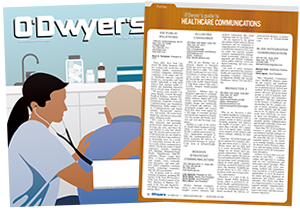 Angela Dejene Angela Dejene |
There are change agents and global first responders who make global health intervention their mission every day — organizations like the Clinton Foundation’s Health Access Initiative, Carter Center, the Bill and Melinda Gates Foundation, Médecins Sans Frontières, Jhpiego and the UN’s World Health Organization (WHO saved all our lives by its prompt and effective mobilization against the Ebola outbreak in 2014).
|
|
We think of those on the “front lines” working to improve the health of the most vulnerable around the world as medical technicians and practitioners first. And they are that.
But think about Mother Teresa. It certainly wasn’t her modern medical prowess that made her effective in relieving suffering among India’s poor. She was a genius at communication.
Mother Teresa was just a schoolteacher when she first landed in India and had only a haphazard introduction to healthcare basics at Holy Family Hospital in Calcutta before she opened her first clinic. She certainly wasn’t canonized because of the high quality of the low-tech and archaic treatments she and her hospice centers later administered to the sick and dying.
She aggressively sought out and petitioned important influentials around the world to raise awareness. What better message platform for raising funds and donor awareness than Mother Teresa’s 1979 Nobel Peace Prize?
Melinda Gates was an ace at math, not medicine, and was initially a computer programmer before she met Bill. But it likely is the application of her marketing communication skills, learned as a product manager at Microsoft, that has made the Gates Foundation so effective in bringing vaccination and hygiene to the rest of the world.
It turns out that the hardest problem in bringing modern healthcare to places in the world that lack even basic necessities is sometimes not the funding nor even the logistics of delivering life-saving medicines to remote corners of the world. The biggest challenge may be raising awareness and understanding among those who most need help.
Working with those international health foundations are world-walking heroes who know how to medically address the biggest threats to global health — like malaria, yellow fever, dengue fever, polio, fistula — even AIDS and Ebola that seemed insurmountable challenges not long ago. At least one huge killer, smallpox, was actually swept off the face of the earth and reduced to a few samples in university labs.
Of course, our passion for sharing medical resources during health crises beyond our own borders seems to burn hottest whenever something new from there, like Ebola and Zika, shows up here, closer to home — like in Miami’s Winwood Arts District known as “Little San Juan” or here in Texas where I live, where there have been 174 reported cases of Zika — all travel-related.
Both the Aedes aegypti and Aedes albopictus mosquito breeds, implicated in the spread of Zika, are prevalent in the Austin area. The fear of Zika is palpable among friends and colleagues here, even if local transmission has not been reported yet. As of early September 2016, the 174 cases in Texas include 11 pregnant women, two infants infected before birth and one person who had sexual contact with a traveler.
If we ourselves, in a land of organ transplants and MD Anderson cancer cures, become frenetic over Zika, think how difficult it is to overcome the cultural suspicions and resistance of poor populations in Asia, Latin America or Africa to conventional and safe vaccinations. Confuse the message and you may well lose the battle … and thousands of lives.
The mostly successful global campaign against polio had a major setback in mid-2003 when a rumor that vaccination was a scheme to sterilize Muslim girls halted the immunization campaign for a year. According to the New York Times, 18 once polio-free countries had outbreaks traceable to Nigeria. And early stages in identifying and eradicating Zika-carrying mosquitoes in Latin America slammed into similar modern myths that the birth defects caused by Zika were actually the result of other mandated government vaccines or the very larvicides sprayed to kill the mosquitoes.
Culture matters when you are trying to save lives, and the biggest enemy to an international intervention to fight disease can often be a messaging stumble that comes from ignoring local issues of race, religion, politics or gender.
But one truth seems to be universal across most cultures: when we educate women, we educate a village. We change a family, we change a community, we change a nation and we change a world.
As Melinda Gates and Mother Teresa have demonstrated, improving health outcomes requires not just modern medicine and technology but clear and compassionate communication to dispel the myths and panics to which we are all prone when our own health and the lives of our families are suddenly threatened.
For those of us in public relations committed to telling stories and creating meaningful change, one of our greatest gifts is our voice. It’s also one of the most powerful tools we have. It’s how we use it — and where and when — that will make all the difference.
* * *
Angela Dejene is Executive Vice President at Crosswind Media and Public Relations in Austin, Texas and heads the agency’s top-ranked global healthcare practice.



 Lo Isidro, senior director at Real Chemistry with more than a decade of strategic communications and PA experience, has joined Narrative Strategies.
Lo Isidro, senior director at Real Chemistry with more than a decade of strategic communications and PA experience, has joined Narrative Strategies. Nelson Fernandez, former North American chair of APCO Worldwide and managing director of Burson-Marsteller, has joined Volunteers in Medicine Berkshires as director of communications and PA.
Nelson Fernandez, former North American chair of APCO Worldwide and managing director of Burson-Marsteller, has joined Volunteers in Medicine Berkshires as director of communications and PA. Lilit Bargar, who was most recently an EVP in the healthcare practice at Weber Shandwick, comes on board at GCI Health as EVP, corporate practice lead.
Lilit Bargar, who was most recently an EVP in the healthcare practice at Weber Shandwick, comes on board at GCI Health as EVP, corporate practice lead.
 Five ways that successful thought leaders are made.
Five ways that successful thought leaders are made.


 Have a comment? Send it to
Have a comment? Send it to 
No comments have been submitted for this story yet.